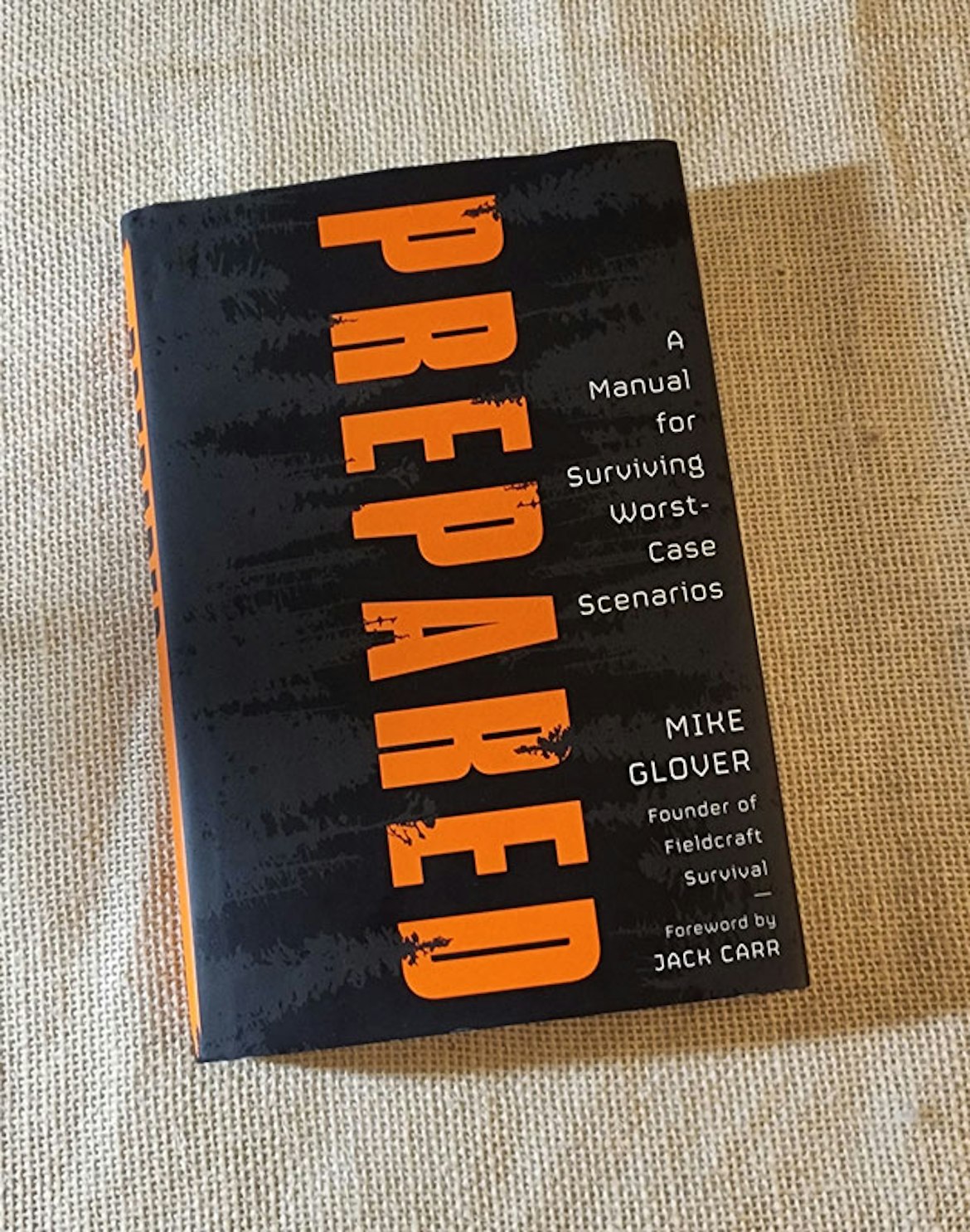There are a number of books on preparedness. The worst of them are a book sized list of stuff that you need to get to be ready. The best of them cover not only gear, but skills and mindset as well. “Prepared: A Manual for Surviving Worst-Case Scenarios” fits in the latter category.
In this book, Mike Glover teaches readers how to be ready for whatever comes their way. Drawing on his most dire experiences in combat and in the real world, this book shows you how almost no disaster is more powerful than someone who is truly prepared.
Mike Glover is the owner and founder of Fieldcraft Survival, a preparedness and training company in Utah. He is a retired Green Beret and CIA contractor and a proponent of preparedness for citizens. He offers training in a growing range of topics that are of value to students. He is also a prolific presence on YouTube, producing videos and podcasts with useful information.
I knew this book would be an important read when I found out it was on the way, but as with any writer who owns a business selling related products, I worry that it would be a sales driver for his products. I was wrong. He refrains from specific suggestions. The few times he does mention a product of his own it is more in the way of demonstrating a thought process than a sales pitch.
The real beauty of this book is it’s emphasis on critical thinking. Each chapter begins with a run down of his thought process concerning the issue at hand. While he never explicitly says it, seems clear to me he holds creative thinking in high regard as well. If you can think critically, you can solve most problems, if you can add a creative element to the process, you can innovate.
The first four chapters of the book are about thinking and planning. He has done his research too. The book starts with the biological and mental processes that people go through in a crisis. He goes on to share examples of how people reacted in crisis and what the results of their decisions were. By this point of the book he has shared some foundational events in his life, and he uses this self-knowledge to describe the events.
The following three chapters apply these ideas to planning, situational awareness and, possibly most importantly, decision points. One of the hardest parts of planning is knowing when to put your plans into motion. When you’re facing a hurricane, it’s an easy decision, but what about greater threats? I feel that the bigger the decision in a crisis and the more “out there” the issue, the harder it is to make the move. These three chapters are helping me to build a better plan.
The last three chapters are more inline with what one would expect from a preparedness book. He discusses a layered system of preparedness in the areas of Everyday Carry, Mobility, and preparing the Homestead, or as I like to call it, bugging in. While he does talk about a few brands that he likes, he approaches this section by applying the critical thinking skills from the first half of the book.
I believe this is an important book for preparedness. Mike Glover leans on real world experience and real research to teach the reader how to get ready. He is more interested in getting readers to think critically about equipment decisions than he is in selling products. If you need to know about his suggestions about gear, tune in to his social media presence. If you want to under the thought process and planning behind it all, read his book. You won’t be sorry.
The post “Prepared: A Manual for Surviving Worst-Case Scenarios” by Mike Glover first appeared on Ready Magazine.









